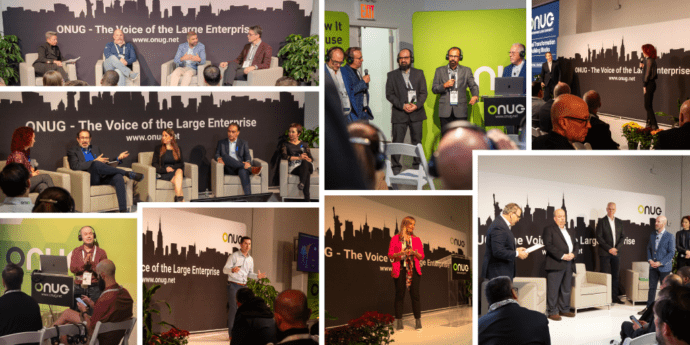Smarter Networks Through Dual-Intelligence AI: How IBM Is Transforming Network Operations
Modern networks are living ecosystems — vast, interconnected, and evolving by the second. From cloud to edge, across vendors and domains, they generate more data than traditional tools or teams can absorb. Managing this complexity requires more than automation scripts and dashboards. It demands intelligent systems that deliver answers and actions, not just alerts.
That’s the idea behind IBM Network Intelligence, a new network-native AI platform designed to help organizations shift from reactive problem-solving to proactive performance assurance. Developed in collaboration with IBM Research, it blends two complementary forms of intelligence into a dual-intelligence solution — analytical and reasoning — to make networks more resilient, efficient, and easy to manage.
The Context Crisis in Modern Networking
Every enterprise faces a data-context gap. Network telemetry and event streams pour in from multiple vendors, layers, and tools, each speaking a different language. Operators spend valuable hours stitching together fragments of insight, often under pressure from outages or performance drops.
This manual correlation is slow and error-prone, consuming large amounts of operational effort. Despite decades of incremental improvements in monitoring and automation, most network teams remain reactive — responding after issues have already impacted users or applications. As networks expand and services grow more distributed, the traditional approach simply doesn’t scale.
Why Conventional AI Falls Short
Previous iterations of AI technology have promised to fix these problems, but most current approaches only go so far. Do-it-yourself AI solutions, vendor-specific AI platforms, and generic large language models (LLMs) can process alerts, yet they struggle to interpret time-series network data or understand relationships among devices and services. Lacking contextual reasoning, they produce noise rather than clarity — leaving humans to fill in the gaps.
IBM’s approach rethinks AI for networking from the ground up. IBM Network Intelligence combines the strengths of data-driven analytics and explainable reasoning to create AI that is fluent in networks — one that sees patterns, understands cause and effect, and assists engineers in closing the loop from detection to resolution.
Dual-Intelligence AI: Analytical Meets Reasoning
At its core, IBM Network Intelligence uses a dual-intelligence AI architecture:
- Analytical AI handles massive telemetry streams, alarms, and flow data, identifying subtle anomalies and trends.
- Reasoning AI — powered by generative and agentic technologies — interprets those findings, builds hypotheses, and recommends or executes fixes.
Together, they transform raw network data into trusted answers: what happened, why, how to fix it, and what may come next. Analytical AI delivers scale and precision; reasoning AI adds explanation and action. The result is a system that augments human expertise rather than replacing it — engineers stay in control while AI amplifies their insight.
Analytical AI: AI That Understands Networks
Underpinning the analytical layer are IBM Granite Time Series Foundation Models, developed by IBM Research as part of the open, trusted Granite family. These compact models are trained specifically on network telemetry, alarms, and configuration data from diverse environments.
Unlike generic statistical tools, Granite models understand the semantics of networking — how elements relate, interact, and behave over time. This enables threshold-less anomaly detection, hidden issue discovery, and early-warning predictions. The payoff is an improved signal-to-noise ratio and higher confidence in every alert or insight the system surfaces.
Reasoning AI: Turning Insight into Action
Feeding on analytical insights, the reasoning layer uses an agentic framework built on IBM watsonx technologies. Specialized AI agents detect issues, identify probable causes, and generate remediation plans.
Multiple agents — such as those for root-cause analysis, retrieval-augmented reasoning, and function execution — collaborate to accelerate troubleshooting and triage. Each can suggest or automate actions, always with human-in-the-loop oversight for transparency and trust.
By replacing manual, multi-team “war rooms” with iterative, explainable analysis, IBM Network Intelligence shortens the path from problem discovery to resolution while preserving accountability.
Human-AI partnership: A Trusted Path to Smarter Operations
IBM recognizes that adopting AI in network operations requires confidence and transparency. That’s why IBM Network Intelligence is built for progressive adoption — organizations can begin with guided analysis and recommendations, then advance toward more automated workflows as trust builds.
This human-AI partnership ensures explainability and governance at every step. Rather than pushing for full autonomy from day one, IBM focuses on enabling teams to operate smarter, faster, and with greater assurance — allowing automation to grow naturally from demonstrated trust.
AI That Works, Explains, and Earns Trust
IBM Network Intelligence represents a major shift in how enterprises manage their networks. By combining analytical precision with contextual reasoning, it delivers AI that doesn’t just watch the network — it understands it.
This is dual-intelligence AI for networks: scalable, explainable, and built on trust. It turns data into decisions, problems into predictions, and complexity into clarity — freeing engineers to focus on innovation instead of firefighting.
Because in the world’s most complex networks, success isn’t about more alerts — it’s about answers you can trust.


